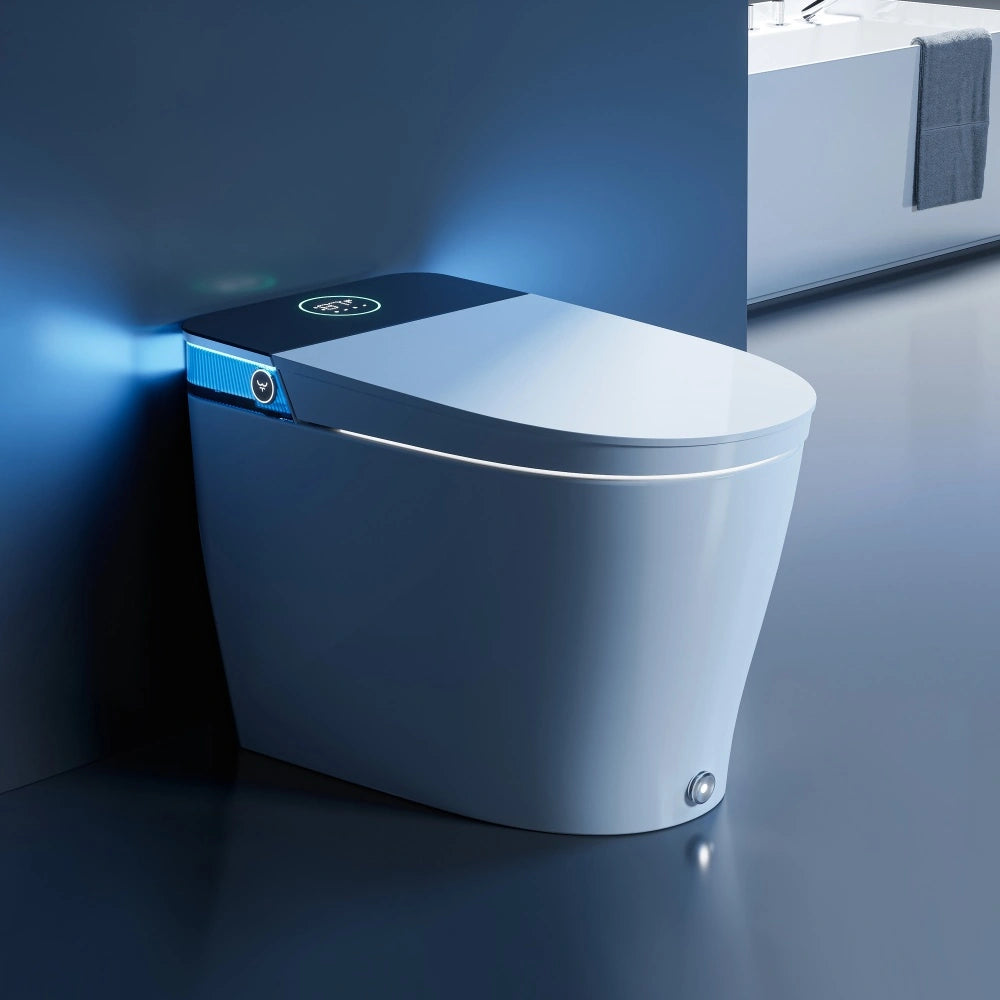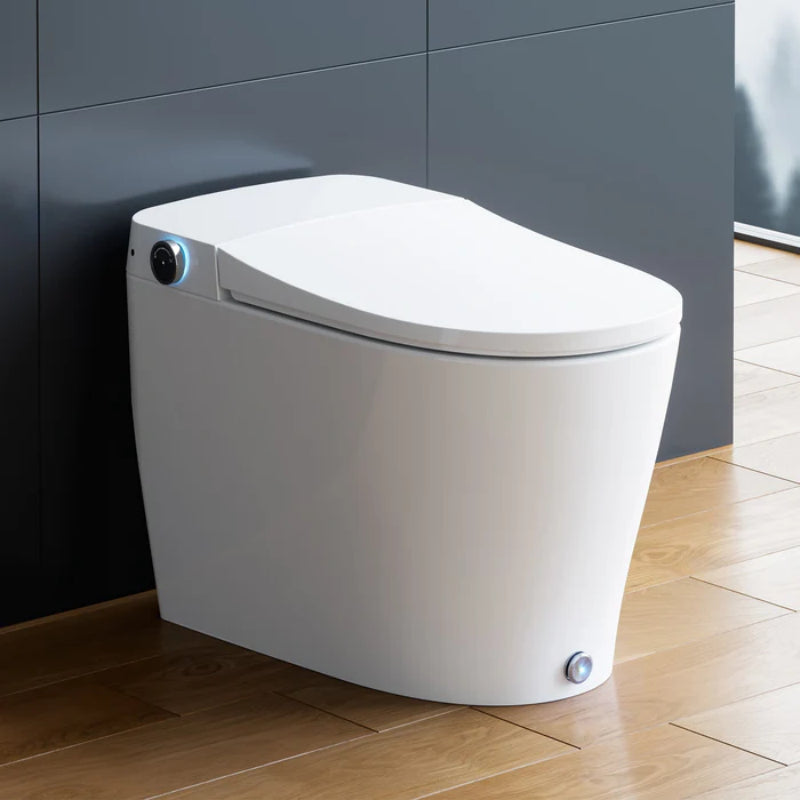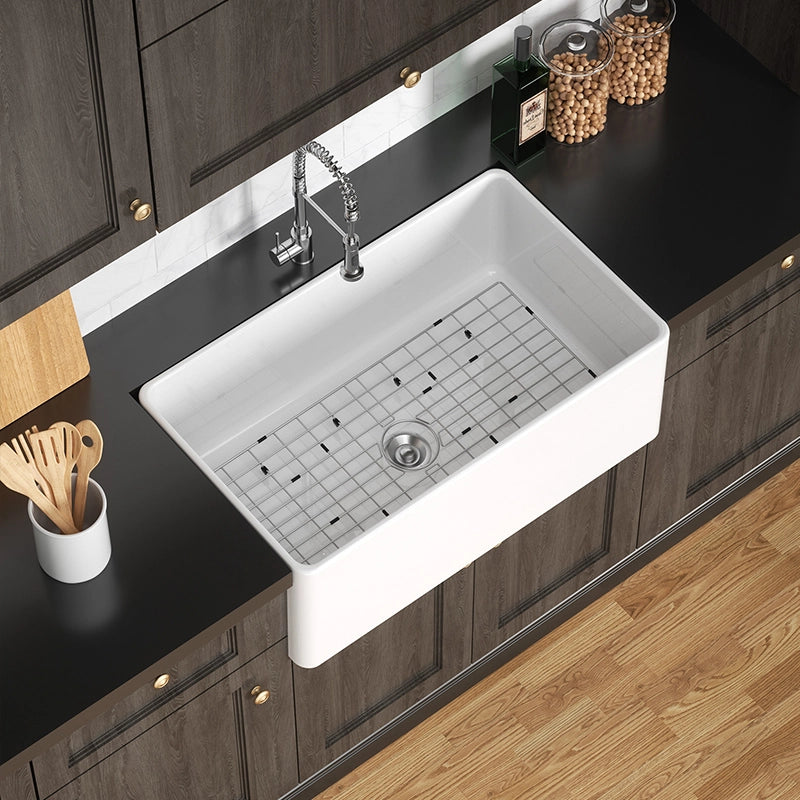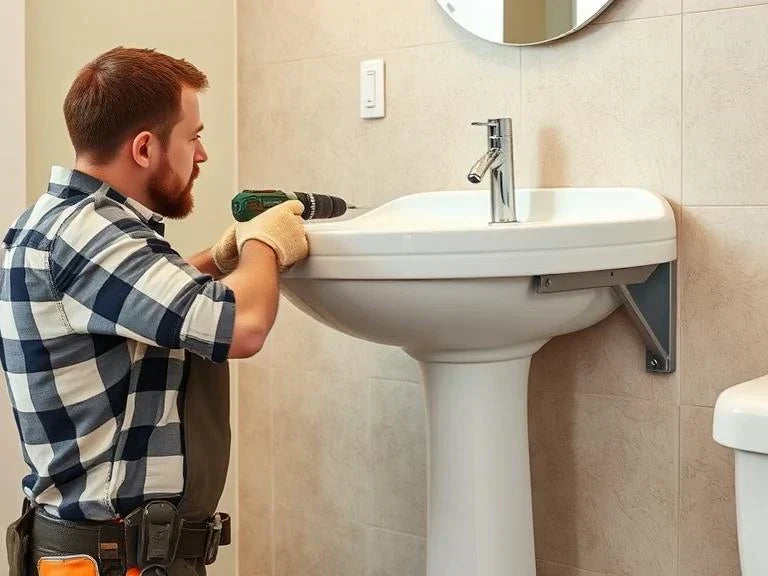Choosing between an acrylic and cast iron tub can be tough. Both have their own benefits and fit different needs. If you're looking for the best option, you're in the right spot.
Let's take a dive into comparing bathtub materials, to help you understand their unique features such, as durability and style as well as cost considerations so that by the end of this comparison journey you'll be able to choose the perfect tub, for your bathroom.
Let's explore the specifics of these materials to help you effortlessly decide between acrylic and cast iron tub choices! In the sections of this guidebook we will provide all the details needed to create a practical bathroom space.

What is an Acrylic Bathtub?
A lot of homeowners prefer bathtubs since they are lightweight and adaptable, in terms of design options and aesthetic appeal. In terms of market trends, acrylic bathtubs have grown increasingly popular, in modern bathroom renovations. Homeowners often choose them, for their budget-friendliness, and interior designers praise their ability to blend seamlessly, with minimalist and contemporary décor. When weighing acrylic and cast iron tub options, it's clear that acrylic appeals, to those who prioritize flexibility in design and ease, of use without sacrificing aesthetics.
Material and Manufacturing
Acrylic bathtubs are lightweight because they're made from plastic. This plastic is heated and shaped over a mold. Fiberglass then reinforces these tubs for strength. Acrylic and cast iron tub comparisons often highlight this lightweight advantage. Acrylic tubs provide more flexibility in shapes and styles due to their material's adaptability.
They also retain heat well with added foam insulation but might need more care to prevent scratches on the surface.
Benefits of Acrylic Bathtubs
Acrylic bathtubs are lightweight making installation simple, for many homes. Their smooth surface allows, for easy cleaning. These tubs also retain heat well enhancing bath time comfort.
If you're debating acrylic vs cast iron tub, for your remodel, note that acrylic models are available in various shapes and styles fitting well in different bathroom designs. Often costing less than other bathtub materials, acrylic options offer style and comfort at a lower price.
Why Choose Acrylic for Your Bathroom
Acrylic bathtubs are lightweight and easy to put in. They don't need a strong floor, to support their weight. These tubs hold heat well, so your bath stays warm longer. Cleaning them is easy and a simple wipe down does the job.
Acrylic vs cast iron tub durability also plays a role here—while acrylic tubs may scratch, they are also easier to repair. You can choose from many shapes and styles to fit your bathroom's look. Acrylic is a good choice for a modern bathroom while keeping costs low.
Another advantage to consider, in the acrylic vs cast iron tub debate is the environmental factor. Acrylic tubs consume less energy, to produce and transport due to their lighter weight making them a slightly greener choice, in some scenarios. Additionally, many acrylic tubs are now made, with recyclable materials aligning with the eco-conscious values, of modern homeowners.

Who Should Choose an Acrylic Bathtub?
An acrylic bathtub is an excellent option for a wide range of users, especially those looking for an affordable, lightweight, and stylish solution for their bathroom renovation. If you're a homeowner working on a budget or planning to replace an old bathtub without the hassle of structural changes, acrylic is your ideal choice.
This lightweight tub is particularly suited for families with small children or elderly members, as it typically offers a warmer surface and softer feel compared to steel or cast iron tub options. Because of its easy to install nature, it's also perfect for people living in apartments, upper floors, or older homes where the weight of the tub matters. In these cases, the acrylic vs cast iron tub debate often ends in favor of acrylic, due to its flexibility and ease of handling.
For those who love a wide variety of bathtub styles, colors, and modern designs without spending a fortune, acrylic bathtubs offer an ideal balance of function, form, and affordability. Whether you’re a first-time homeowner, a DIY enthusiast, or a designer looking for versatility, acrylic is a top pick for both standard and custom bathroom setups.
What is a Cast Iron Bathtub?
Cast iron bathtubs are renowned, for their durability and timeless appearance that can stand the test of time beautifully for years to come. They are crafted by pouring iron into a mold and then coating it with enamel to create a long lasting tub that retains its beauty even after many years of use.
Material and Durability
Cast iron tubs are made, by pouring molten iron into molds, then coating them with enamel. This makes them strong and heavy. The enamel surface resists scratches and chips allowing cast iron bathtubs, to last for decades. A crucial factor in the installation debate, of acrylic and cast iron tub is accessibility. For condos or apartment units located on higher floors bringing in a heavy cast iron tub may be logistically impossible without special equipment.
They keep their shine with minimal care, rarely showing wear or damage from daily use. Cast iron is a durable choice, for those planning multiple bathroom renovations.
Benefits of Cast Iron Bathtubs
Cast iron tubs last for many years without damage offering long-term durability. They keep bath water warm due to excellent heat retention reducing the need to add hot water frequently.
These tubs also feature a classic style that enhances bathroom aesthetics. Choosing cast iron means opting, for both functionality and design in bathroom renovation.
Why Choose Cast Iron for Your Bathroom
Cast iron tubs are stronger and last longer than many other types. This saves money over time because you don't need to replace them often. They keep water warm for longer, which makes your baths more enjoyable.
The timeless design enhances the aesthetics and charm of any bathroom space. If you seek a bathtub that blends sturdiness, with sophistication opting for cast iron is a decision. These tub models exhibit resistance to scratches and chips compared to materials available, on the market.
Who Should Choose Cast Iron Tubs?
Cast iron tubs are ideal for homeowners who prioritize durability, classic design, and long-term investment in their bathroom renovation. If you want a bathtub that offers exceptional heat retention, an elegant porcelain-coated enamel surface that prevents chipping, and a timeless style like a clawfoot cast iron freestanding tub, then cast iron is the perfect material choice.
Because cast iron tubs weigh between 250 and 500 pounds, they are best suited for homes with strong floor support, typically on the ground floor or in spaces where reinforcing the floor is feasible. This makes them less ideal for upper-floor bathrooms unless additional structural work is planned.
For those who value a durable and long-lasting fixture that can be refinished and restored to look new for decades, the standard cast iron tub remains unmatched. It’s a popular choice among homeowners who want to achieve an elegant and vintage-inspired bathroom design while investing in quality. If you’re willing to handle the heavier weight and higher cost upfront, the cast iron tub is a superb option for both classic and modern bathroom styles.
Acrylic vs. Cast Iron Tub: Similarities and Differences
When planning a bathroom renovation, one of the biggest decisions you'll face is choosing the right bathtub material. Two of the most popular options are the acrylic soaking tub and the cast iron bathtub. Each has its own pros and cons in terms of durability, heat retention, installation, and cost. In this guide, we’ll walk you through the key differences between an acrylic vs cast iron tub to help you make the best choice for your home.
Weight and Installation
The main difference between acrylic soaking tubs and cast iron tubs stems from their weight. The minimum weight of a cast iron tub reaches 250 pounds but freestanding clawfoot models can exceed 500 pounds and even reach higher weights. The installation of cast iron bathtubs usually takes place on ground floors or requires bathroom renovation floor support reinforcement.
Acrylic bathtubs weigh significantly less than cast iron tubs because they typically do not exceed 100 pounds. The tub's lightweight design allows for effortless transportation and installation. The reduced weight results in reduced installation expenses and decreased pressure on your home's structural elements. Acrylic represents the better choice when you need to replace an old tub in an upstairs bathroom or work with an older home.
Acrylic tubs serve as a safe and adaptable solution for homes that cannot bear the weight of cast iron tubs. The product enables homeowners to save money on both work time and construction expenses and budget costs. Acrylic bathtubs serve as a convenient bathroom fixture which appeals to homeowners who need a practical tub solution for their modern bathroom space.
Durability and Maintenance
The durability of materials stands as the primary distinction between cast iron and acrylic bathtubs. The manufacturing process of cast iron tubs involves pouring molten iron into molds before applying porcelain enamel for protection against chipping and stain resistance and durability under heavy usage. Standard cast iron tubs manufactured during the 1930s continue to function because they demonstrate outstanding durability.
Acrylic maintains a lower inherent durability level but provides simpler maintenance and repair options. The surface of an acrylic tub can be fixed by using a DIY repair kit available at local hardware stores to remove small scratches. The restoration process for cast iron chips proves to be challenging and expensive compared to acrylic repairs.
Acrylic tubs offer better appearance maintenance because they require less cleaning effort and their finish remains resistant to damage from harsh chemicals and wall placement issues and caulk lines.

Heat Retention
The main distinction between acrylic soaking tubs and cast iron bathtubs lies in their heat retention properties. Cast iron bathtubs maintain heat for longer periods because of their dense thick material which enables you to enjoy warm water during extended bathing sessions.
Acrylic bathtubs from modern times can receive foam insulation to decrease heat loss. The heat retention of acrylic bathtubs remains effective for standard bathing sessions although they lose heat slightly faster than cast iron tubs.
Ideal for: People who want to soak for extended periods should choose cast iron bathtubs because they maintain warmth without needing constant hot water additions.
Price Comparison
Shifting the focus from heat retention, next up is the price comparison between acrylic and cast iron tubs. Price plays a big role in choosing between these two options. Let's see how they stack up.
| Type | Initial Cost | Long-Term Value |
| Acrylic Tub | Lower | High |
| Cast Iron Tub | Higher | Very High |
Acrylic tubs start at a lower price. They are lighter and cost less to install. Over time, they hold up well if you take good care of them.
When looking into cast iron vs acrylic bathtub, one must also weigh long-term value. Cast iron tubs cost more at first. But they last for many years. They are a good choice if you want something for the long run. Both types have their perks. It all depends on what you need for your bathroom.
Design and Style Options: Wide Variety Available
Both cast iron and acrylic tubs come in a range of styles, from modern alcove installations to vintage-inspired clawfoot tubs. However, acrylic tubs offer more flexibility in terms of shape, size, and design, especially if you're working with smaller or uniquely shaped bathrooms.
For example, a sleek acrylic freestanding tub is a common fixture in contemporary bathroom design, while a cast iron freestanding tub adds a touch of old-world elegance that’s hard to match.

Conclusion: Which Bathtub is Right for You?
Choosing between a cast iron or acrylic bath depends on your preferences and needs. It's important to think about design aesthetics upkeep needs and total expenses. These factors will help you select the tub, for your requirements.
Ultimately, your lifestyle will heavily influence your decision. Busy families may lean, toward acrylic for its ease of upkeep and safety for children, while design enthusiasts and those restoring older homes might find cast iron tubs better suited to their vision. So when choosing acrylic or cast iron tub, balance functionality with personal lifestyle and bathroom space.
Summing Up the Differences
Acrylic tubs are easy to install and lightweight compared to cast iron tub which is heavier and more long lasting with wear over many years while also keeping water warm, for longer periods at a lower cost.
If you're still deciding between acrylic soaking tub vs cast iron, consider your renovation goals: for a modern bathroom with easy maintenance, choose acrylic. If you prefer a classic look and don't mind paying more or dealing with difficult installation, go for cast iron.
Both materials offer distinct advantages depending, on your bathroom renovation goals. Acrylic is practical, for its heat retention and lower maintenance costs. Cast iron excels, in durability and style but requires a bigger investment upfront.
HOROW bathtubs stand out for their practicality and durability, making them a great fit for modern bathrooms. These acrylic tubs retain heat well, turning your bath into a spa-like experience with features like air massage and foam insulation.
FAQ
1. Is a cast iron bathtub worth it?
Cast iron freestanding tubs are a great family heirloom, and they live up to their name! They are so strong that they last for decades and wear and tear is non-existent! Because there is an iron core inside, the outside is also wrapped in a layer of enamel, so especially resistant to manufacturing, unlike those modern materials, not moving on the cracked, scratched, dented.
Then there is the insulation, which is a highlight of the cast iron bathtub. Compared to acrylic or fiberglass tubs, it holds heat much longer. If you like to soak until the end of time, the water is not easy to cool, then cast iron bathtub is definitely your favorite.
Of course, good things don't come cheap. Cast iron bathtubs usually cost more than acrylic or fiberglass tubs. Plus, they're heavy, so you may have to reinforce the floor when you put them in, and they're a little more complicated to install, especially in older homes or high-rise bathrooms.
Overall, if you're looking for a bathtub that's luxurious, durable, well insulated, and adds a bit of timeless elegance to your bathroom, a cast iron bathtub is definitely worth it. Although you'll have to invest a bit of money in the beginning, it's definitely worth it when you think about how long it will last and how comfortable it will be!
2. Which is better, a cast iron or acrylic tub?
When picking a bathtub, choose cast iron or acrylic? Well, this is something that depends on your needs, preferences, and the actual condition of your bathroom. Both materials are pretty durable, but each is good in its own way, and there are some differences, especially in performance, maintenance, and long-term value. If you want a bathtub that's super durable, holds heat well, has a classic, timeless look, and isn't afraid to spend a lot of money or be heavy when installing it, then a cast iron bathtub is definitely the way to go. But if you think it's easier to install, more affordable, and you want a modern bathtub, then an acrylic bathtub might be a better choice for your home.
3. What is a cast iron tub?
A cast iron bathtub, that's a gem! It is made of molten iron poured into a mold, and after cooling it becomes that classic look. When the base of the bathtub hard, and then brushed with a layer of porcelain enamel, this porcelain enamel can be powerful, not only let the bathtub shiny, but also particularly practical, scratch not spend, not broken, not rust, not corrosion. Iron and porcelain so a ride, the bathtub becomes particularly strong and durable. If you take good care of it, it won't be a problem if the tub lasts 50 years or more! Homeowners who prefer a durable, classic design are attracted to cast iron bathtubs. Moreover, cast iron bathtub insulation is also first-class, soaking water is not easy to cool, soaking for how long are warm, is simply the gospel of soaking enthusiasts!
4. How can you tell if a bathtub is cast iron?
Want to know if your bathtub is made of cast iron? Simple, a few small tests can be done! Touch the bathtub, listen to the sound, weigh it, and then look at the appearance, the characteristics of cast iron bathtub at a glance. Cast iron bathtub, that is very strong, heavy, and wrapped in a thick layer of enamel. With acrylic, fiberglass, those light, flimsy guy compared to the cast iron bathtub is simply a tough guy! You touch the bathtub, feel the hard, knock it, the sound is dull and powerful, and then look at the overall appearance, heavy, that in all probability is a cast iron bathtub. All of this information can be a treasure when you are planning to fix your bathtub, upgrade or remodel your bathroom!
5. Do cast iron baths lose heat quickly?
Cast iron bathtub insulation effect! Cast iron, dense and heavy, heat absorption and insulation are much stronger than those bathtubs made of acrylic and fiberglass. You pour hot water into the cast iron bathtub, it slowly warmed up, the water temperature can be maintained for a long time. This is for the love of bath soak to the end of days, and do not want to always add water for people, is simply a godsend! So, if you want a well insulated bathtub, a cast iron bathtub is definitely the way to go!
6. What is the disadvantage of a cast iron tub?
Cast iron bathtubs, it has a pretty obvious disadvantage, that is - heavy! This guy, not moving on 250 pounds up, move up, load up are particularly difficult, especially to move to the second floor bathroom, or installed in the old house, it is more difficult. Sometimes, in order to let it stay firmly, but also to the floor reinforced, or filled with water can be suspended.
As for price, a cast iron tub is usually more expensive than an acrylic or fiberglass tub to begin with. Although it is particularly durable, insulation is also first-class, the long-term use of a very cost-effective, but the beginning to shell out the money and the installation of the hassle, does make some homeowners heart muttering.
However, if you really value durability and insulation, then a cast iron tub is definitely worth the investment!
7. Which one should I choose: an acrylic or a cast-iron bathtub?
Your choice depends on your needs. If you want something lightweight and low-cost, go for an acrylic model; if you prefer durability over cost, then a cast-iron bathtub would be better.








Leave a comment
This site is protected by hCaptcha and the hCaptcha Privacy Policy and Terms of Service apply.